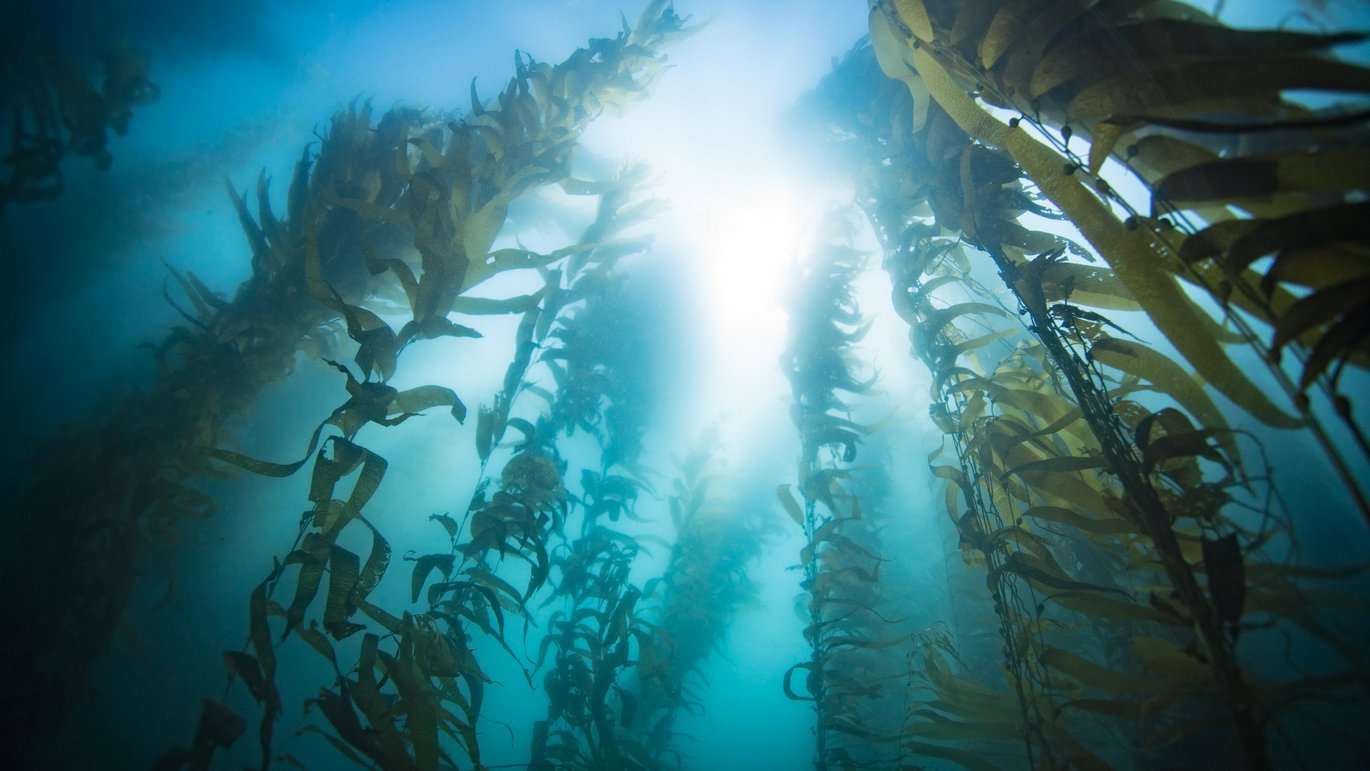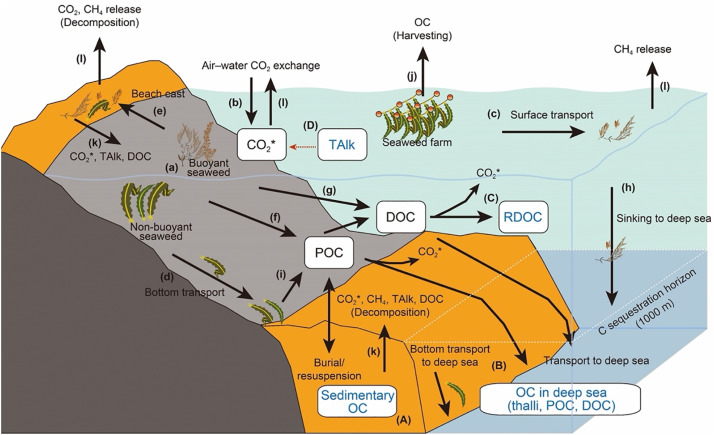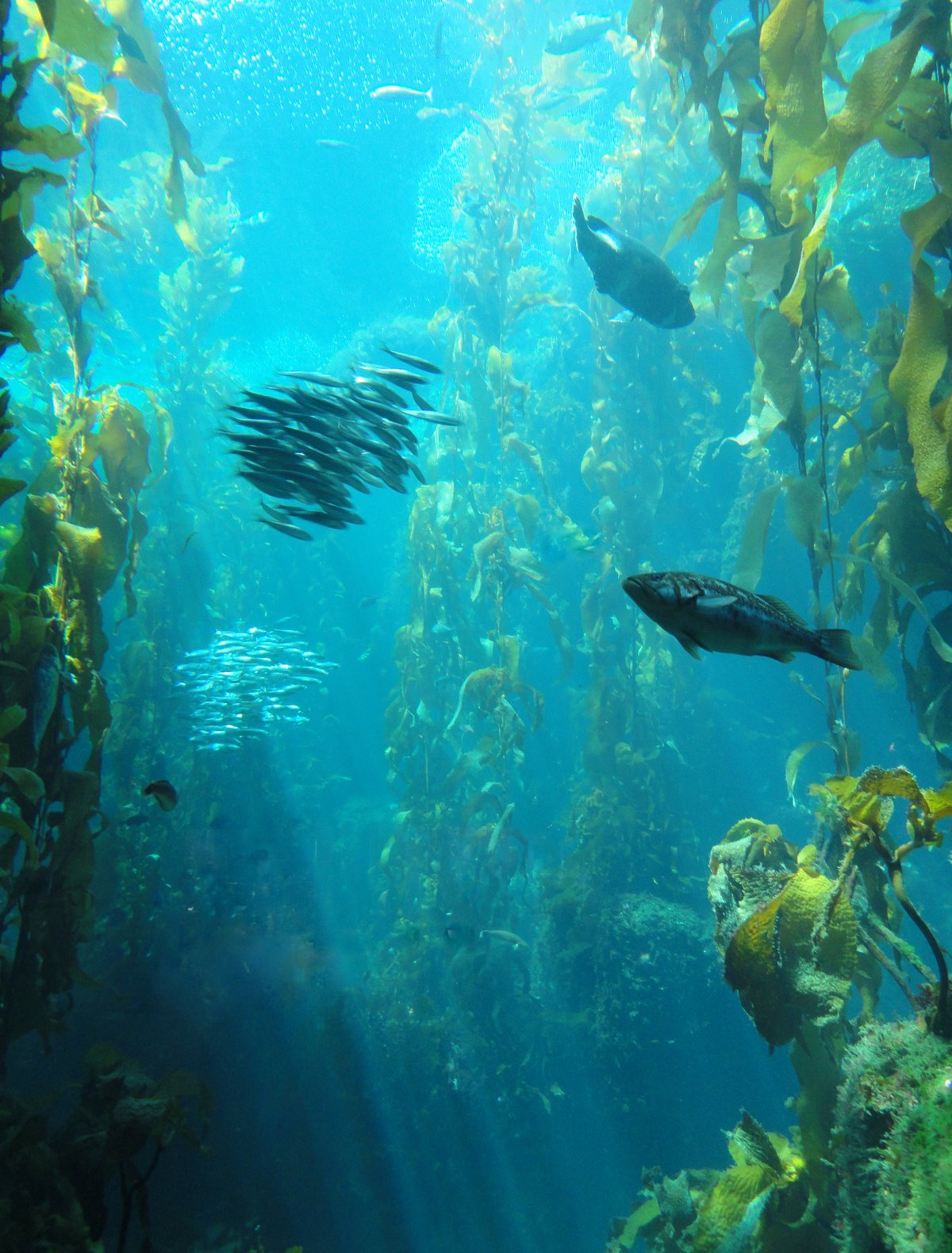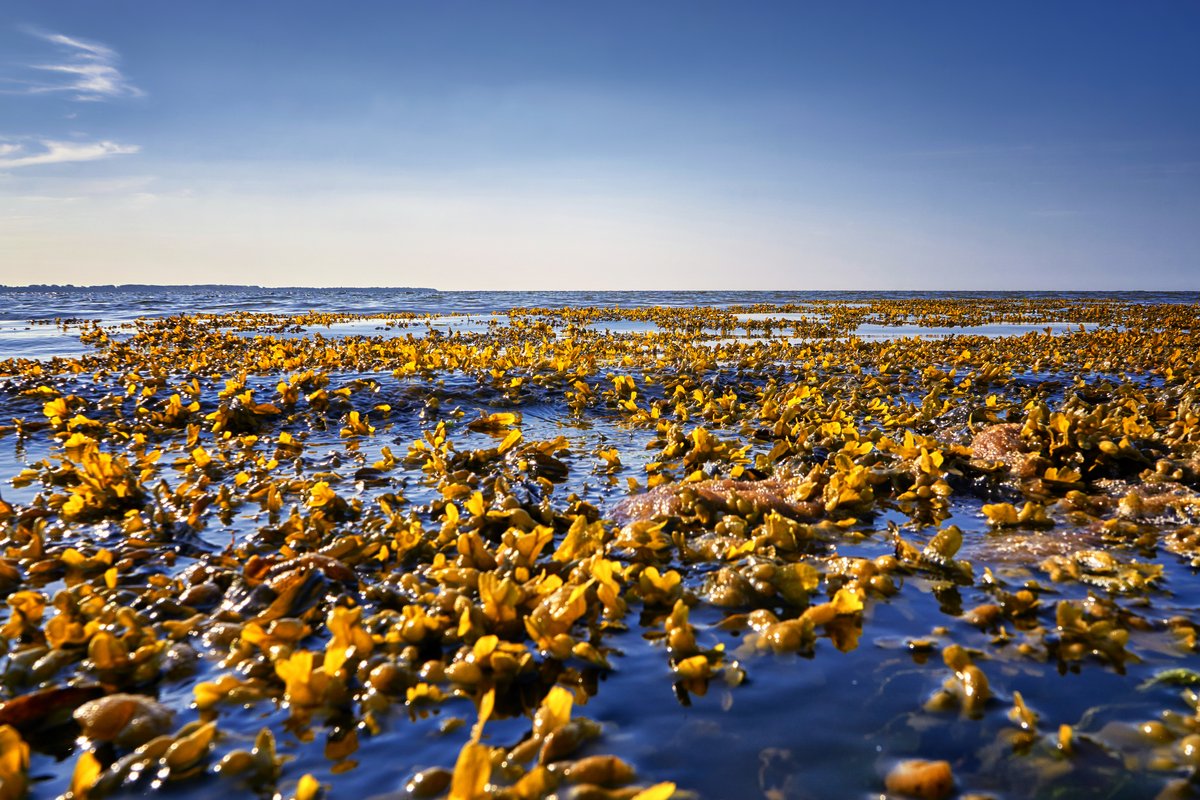Bad for the climate: Seaweed forests are disappearing
Every year, areas of wild seaweeds are disappearing from the world's oceans, even though we should be protecting them. Seaweeds are effective at binding CO2, and new research confirms that protection and cultivation can contribute to climate solutions.

Like on land, the sea also holds a multitude of landscapes. Meadows of seagrass and forests of seaweed grow where light can reach the seabed. And just like on land, underwater forests are enormously important for binding and storing CO2 from the atmosphere. Forests also strengthen biodiversity.
Unfortunately, things are going in the wrong direction.
Research has estimated that 1.8 per cent of the world's seaweed forests are disappearing every year. This means that less CO2 is sequestered, and this also affects biodiversity, explains Professor Dorte Krause-Jensen from the Department of Ecoscience at Aarhus University.
Together with a number of colleagues from abroad, she is behind a new research article that compares existing knowledge about how both wild and cultivated seaweeds can help to solve the climate crisis.
"Seaweed forests are extremely productive and therefore efficient at absorbing CO2 and incorporating it in their biomass. Furthermore, some of the CO2 absorbed by the forests is buried in the sea. Protection and restoration of seaweed forests can therefore have positive effects on the climate,” she says.
| Why seaweed forests are disappearing |
|---|
Over the past century, many seaweed forests have disappeared in Denmark - and in large parts of the rest of the world. There are several explanations for this. In Denmark, we know that construction of coastal protection and harbour piers, and excavation of navigation channels has meant that many of the stones on which seaweeds used to grow have been taken out of the sea and used as building materials. Furthermore, trawling destroys seaweed forests when nets are towed along the seabed. Overfishing also disrupts the food chain, for example populations of sea urchins are growing, and these are hindering seaweed growth. Finally, discharges of nutrients from land cause the ecosystem to tip over so that seaweed forests no longer thrive. "Inlets, fjords and coastal marine areas in particular have major problems with far too many nutrients in the water. This leads to blooms of microalgae and oxygen depletion (eutrophication): both of which are harmful to plants and animals," says Dorte Krause-Jensen. “If we are to restore the seaweed forests, we therefore have to ensure good water quality, good benthic conditions and healthy food chains.” |
Hard to measure the CO2 effects of seaweed forests
For some years, researchers have been discussing the effectiveness of seaweeds at binding and storing CO2. And they have discussed how much it actually helps to restore lost seaweed forests.
It is not easy to determine the significance of the underwater forests, explains Dorte Krause-Jensen.
“It’s relatively easy to measure for eelgrass and other vegetation under the sea that grows on sandy seabed. Eelgrass builds up a deposit of carbon in the seabed under the meadows when its leaves fall off and settle on the bottom. By digging into the seabed beneath the eelgrass and taking a sample, we can measure exactly how much CO2 has been stored and how quickly it happened.”

Unlike eelgrass, seaweeds grow on rocky seabed. This means that carbon deposits are not built up under the forest. Instead, CO2 is stored in many other places and the challenge is to find these places and calculate how much of the carbon stocks come from seaweeds.
"Seaweeds build up carbon deposits in the sea when pieces of the seaweed are trapped by ocean currents and carried to carbon stocks at the bottom of inlets or out in the deep sea. Here, some of the pieces of seaweed are eaten by small animals or they otherwise decompose, while the rest is buried,” she says and continues:
“Because the seabed's carbon stocks come from several sources, it’s difficult to measure exactly what comes from the seaweed forests. It requires the use of special seaweed markers, and even with this technique, putting an exact figure on the contribution of seaweeds to marine carbon stocks is challenging: as is estimating how much larger the carbon stock will be when seaweed forests are restored”.
Another challenge is to get an overview of the seaweed forests, and how they change over time. This is difficult because the forests are hidden under the surface of the sea.
“Because seaweed forests grow at great depths, it’s difficult to map them. In fact, until recently, we lacked a well-founded inventory of the global distribution of seaweed forests," says Professor Krause-Jensen.

The world's seaweed forests bind hundreds of millions of tonnes of CO2
Although it is difficult to calculate how much CO2 seaweed forests bind, the researchers have tried to make a rough estimate. Globally, we estimate that wild seaweed forests contribute 634 million tonnes of CO2 equivalents annually to marine carbon stocks, according to Dorte Krause-Jensen.
That is almost one-tenth of annual global emissions by the transport sector.
"This is a first estimate that we calculated back in 2016. Since then, research has aimed at understanding the processes even better to support the estimate, but we don’t yet have a better figure,” she says and continues:
"Even though global seaweed forests make a major contribution to marine carbon stocks, there will be no net effect on the climate if the stocks are stable over time. Only if we accelerate restoration of seaweed forests, prevent the loss of threatened forest areas, and cultivate more seaweeds will our actions contribute to a climate solution. These are the solutions we focus on in the new article”.
| Several benefits from new seaweed forests |
|---|
Not only do seaweed forests bind CO2, and therefore more forests can play a role as one of the many solutions to the climate crisis; seaweed forests are also good for the marine environment. Seaweed forests are important habitats for many animals and therefore contribute to biodiversity. And they help reduce the amount of nutrients in the water. Nutrient discharges must be limited at source. This means that cities and agriculture must discharge less. Once this has happened, seaweed forests will thrive better and can absorb more nutrients; thus creating even better water quality. In other words, restoring seaweed forests can benefit the climate, biodiversity and water quality. Three birds with one stone. |
Seaweed farms could help
One way to limit CO2 in the atmosphere is therefore to protect and restore seaweed forests around the world. But there is another way: seaweed farms. Farms at sea, where seaweed hangs down from long ropes floating in the sea surface.
There is already one seaweed farm after another along much of the coast of East Asia. In China and other East Asian countries, there has been a tradition of cultivating seaweeds for hundreds of years. Primarily for food production.
In fact, seaweed cultivation accounts for as much as 51% of global aquaculture production.
Europe, on the other hand, is far behind in seaweed cultivation. There is great potential here, says Dorte Krause-Jensen, but she stresses that it is important to ensure that farms are sustainable and do not harm natural ecosystems.
“Sustainable seaweed cultivation requires neither arable land, irrigation nor fertiliser, and it can have several positive effects. For example, the climate effect could be in the products that can be made from seaweeds,” she says and continues:
“Seaweeds can be used for food, feed supplements and fertilizer. And it can replace material with a higher climate footprint in a wide range of products. For example, you can make bioplastic out of seaweeds - and it is likely that this is greener than making plastic out of oil. However, it’s important to remember that we need lifecycle analyses of products made of seaweeds before we can calculate their total climate effect”.

A controversial solution
Focus in recent research on how much seaweeds contribute to the ocean's carbon stocks has led some to suggest that we should grow large amounts of seaweeds, which we could then sink deep into the sea in order to store a lot of CO2.
However, Dorte Krause-Jensen and her colleagues in the study do not support this solution.
"This will have unknown ecological consequences. Besides, it is ethically irresponsible to dump a valuable product on the seabed,” she says, and concludes:
"Although our research highlights several ways of how seaweeds can have a positive climate effect, seaweeds are no miracle solution. We still lack better verification of the CO2 benefits, but since seaweed forests have positive effects on climate, biodiversity and water quality, there are a multitude of good reasons to widen their distribution”.
| About the research | |
|---|---|
| Type of study | Meta study |
| External funding | The study is supported by funding from a large number of research foundations (see the research article for details). |
| Conflicts of interest | The researchers declare that there are no conflicts of interest in connection with this research. |
| Link to the scientific article | Potential role of seaweeds in climate change mitigation |
| Contact information | Dorte Krause-Jensen Professor at the Department of Ecoscience - Marine Ecology Email: : dkj@ecos.au.dk Phone: +45 61 86 06 18 Jeppe Kyhne Knudsen Journalist and science communicator Email: jkk@au.dk Phone: +45 93 50 81 48 |
